Bingham Farms, MI, March 13, 2024 — On the heels of the release of Nielsen’s new report, “Optimizing Political Campaigns To Win In November,” Jacobs Media has released initial results from its 2024 Techsurvey report, providing radio broadcasters with a road map to utilize when generating political advertising dollars. In this study conducted during January and February of this year, more than 29,000 core radio fans from the U.S. responded to the world’s largest online radio survey.
As Jacobs Media President Fred Jacobs noted, “While Techsurvey 2024 results won’t be widely released until next month, the importance of this data for radio stations today is obvious. As the Nielsen study notes, radio is an excellent marketing vehicle in political races. Techsurvey reveals actionable results by format, generations, ethnicity, and other key demographics.”
Jacobs Media COO Paul Jacobs views this data as especially timely for radio in a hot election environment: “Without question, political advertising dollars are important to radio operators, but historically, the only data stations have had is ratings. The data from Techsurvey 2024 takes radio’s sales pitch to a higher level, providing invaluable insight designed to not only help radio sellers, but also leaders of political campaigns determine where to invest their dollars for maximum effect. It makes a powerful statement not only about radio’s power, but also demonstrates the versatility of the medium – radio can help political campaigns regardless of party, region, or size.”
Key findings include:
1. Radio listeners will be following the 2024 Presidential election very closely.
In fact, more than eight in ten broadcast radio fans say they’ll be very closely following the race to the White House, especially males and progressively older radio listeners.

Those likely to focus on the election this year are especially apt to be partisans of News/Talk, Triple A, and Sports Radio stations. More than nine in ten say they will be “very” or “somewhat closely” following the political goings-on.
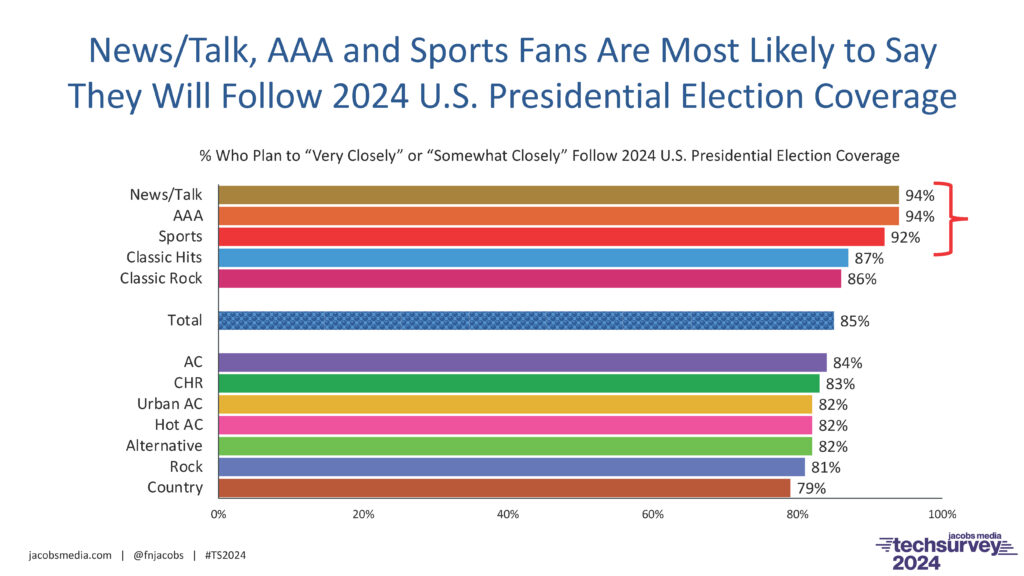
- In Presidential election years, Techsurvey asks about party preference, a particularly useful tool for political marketing activities. In comparing the 2020 data to this new survey, we see a 2-point shift between Democrats (up) versus their Republican counterparts (down). Independents have also seen their ranks grow by 2%, while those without a stated party preference comprise nearly three in ten respondents.
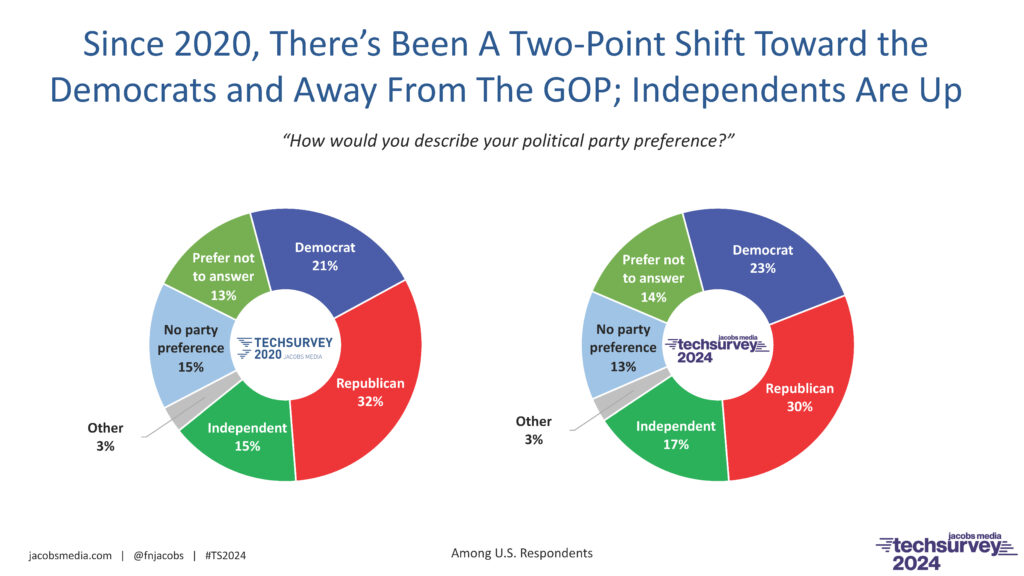
- By age, Gen Z and Millennials are more likely to classify themselves as Democrats, while radio fans who fall in the Gen X, Boomer, and Greatest Generation groups lean Republican.
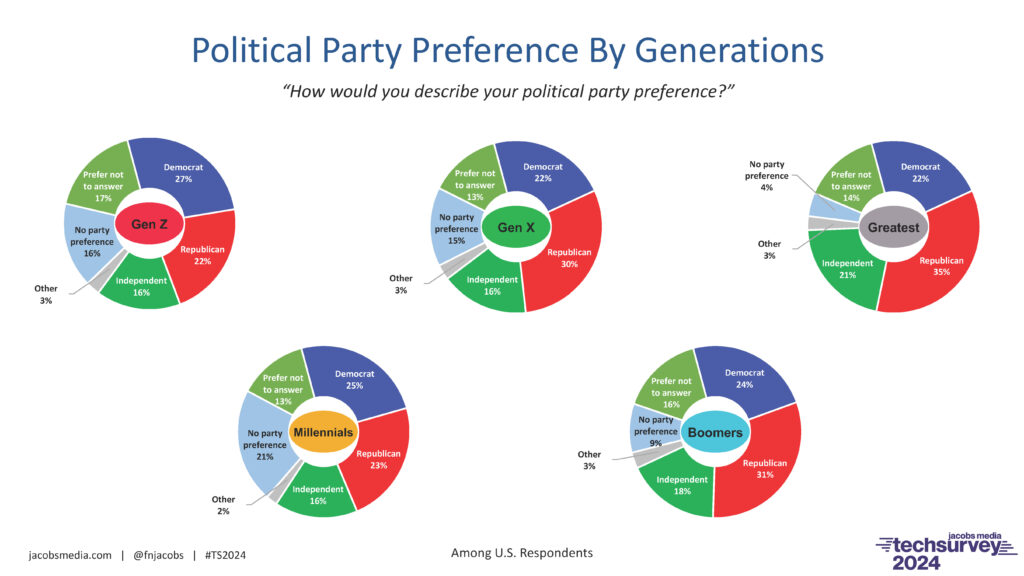
- As for ethnicity, whites are especially like to be a part of the GOP ranks, while ethnic minorities are decidedly in the “blue” column, especially Blacks.
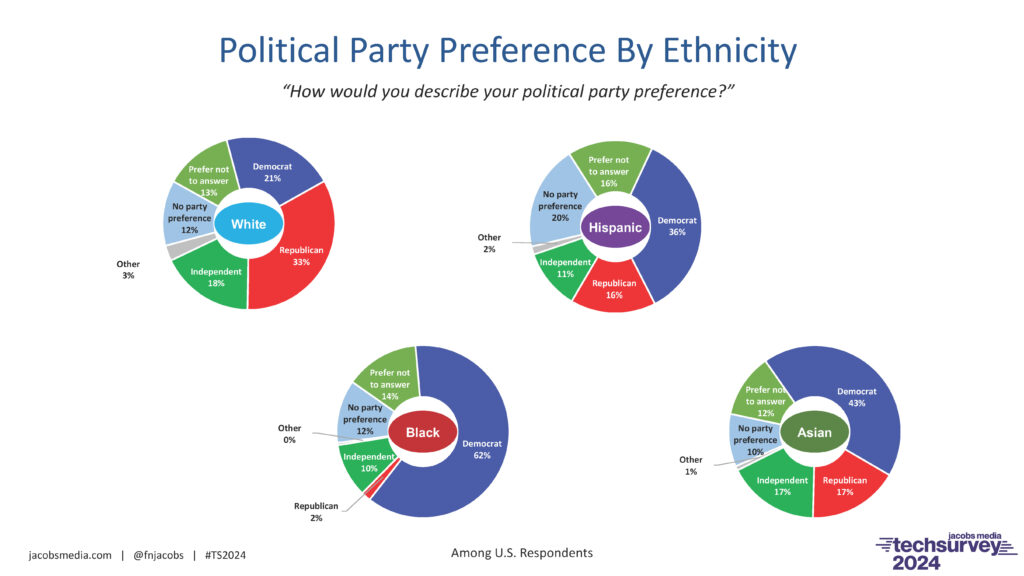
- And then there are the radio formats, 12 in all, and a key to marketing effectively using broadcast radio. They are listed on three different slides in alphabetical order.Some highlights:
- Partisans of Country radio stations are least likely to be Democrats (10%), and most apt to be GOP supporters (46%).
- Fans of Urban AC radio are the least likely to count themselves as Republicans, while a majority (54%) says they support the Dems (54%).
- Classic Hits P1s are the most evenly split between the two major parties, as 26% report in as Republicans, while 25% count themselves as Democrats.
- Sports Radio devotees are the most likely to end up as Independents (22%), among qualifying radio formats in Techsurvey 2024.(Click to expand this image)
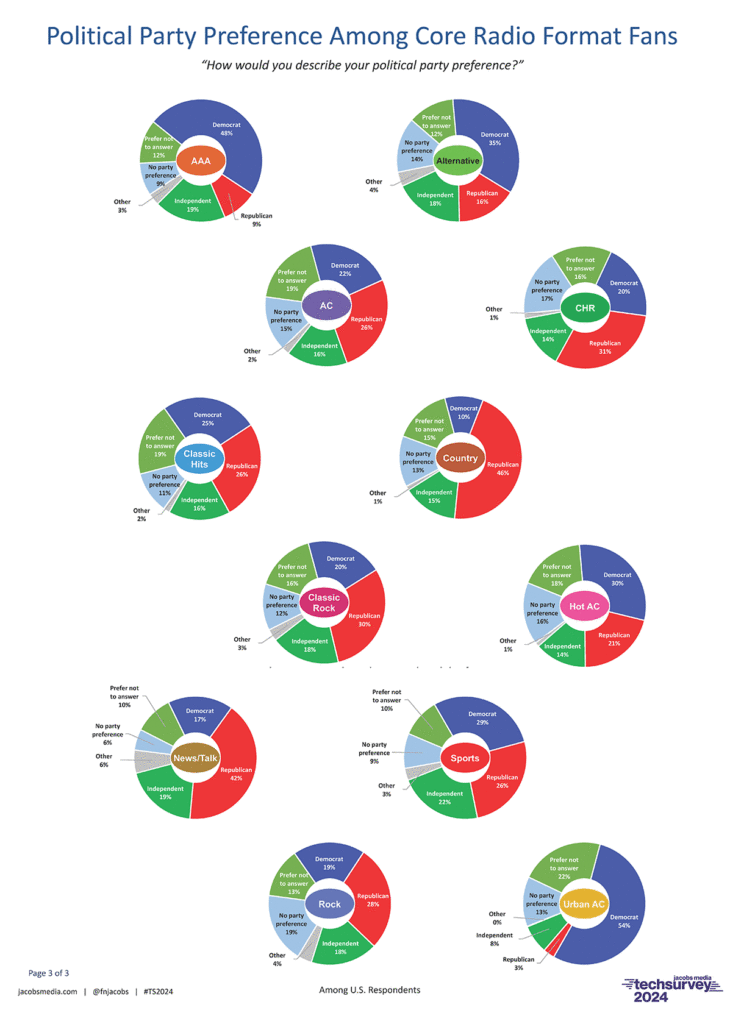
This format level data should be especially helpful to candidates and supporters of propositions and referenda. No other advertising medium offers a more effective way to either target supporters, speak to Independents, or appeal to those on the other end of the political spectrum than radio.
6. One last measure in Techsurvey 2024 is residential location. Respondents were asked to classify their living situations as urban, suburban, or rural. Suburbanites (59%) comprise a majority of the sample, followed by rural dwellers (22%), and urbanites (17%). Here are their party preferences:
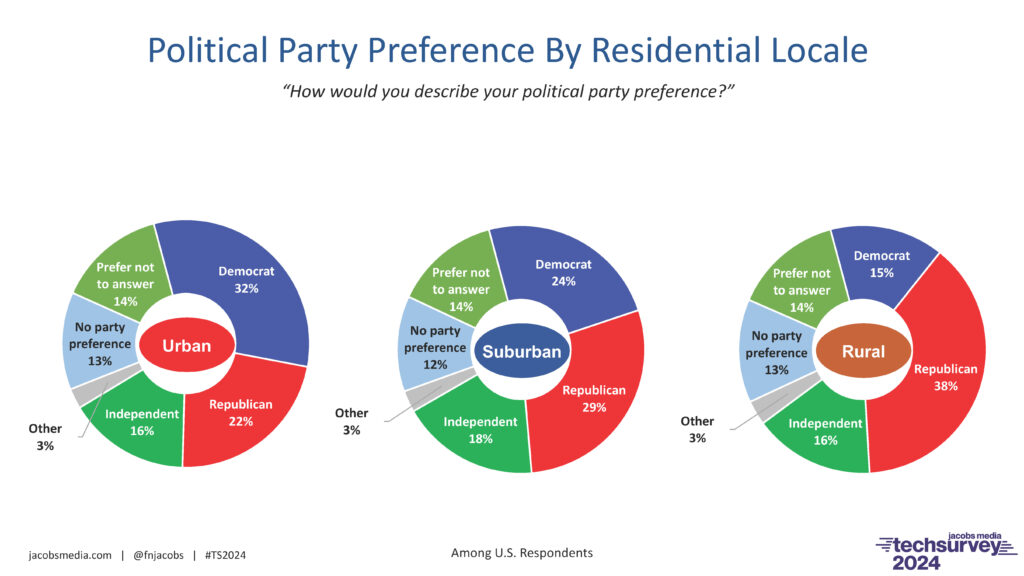
Not surprisingly, urban residents are the most Democratic leanings, while those living in America’s country sides are decidedly Republicans by more than a 2:1 margin. Suburbanites are mostly split between the two major parties, but GOPers have a clear edge. And interestingly, Independents are equally likely to dwell in urban, suburban, and rural situations.
Jacobs Media will schedule an all-industry webinar to share Techsurvey 2024 results in April.
For more information, contact Fred Jacobs at [email protected] or Paul Jacobs at [email protected].



